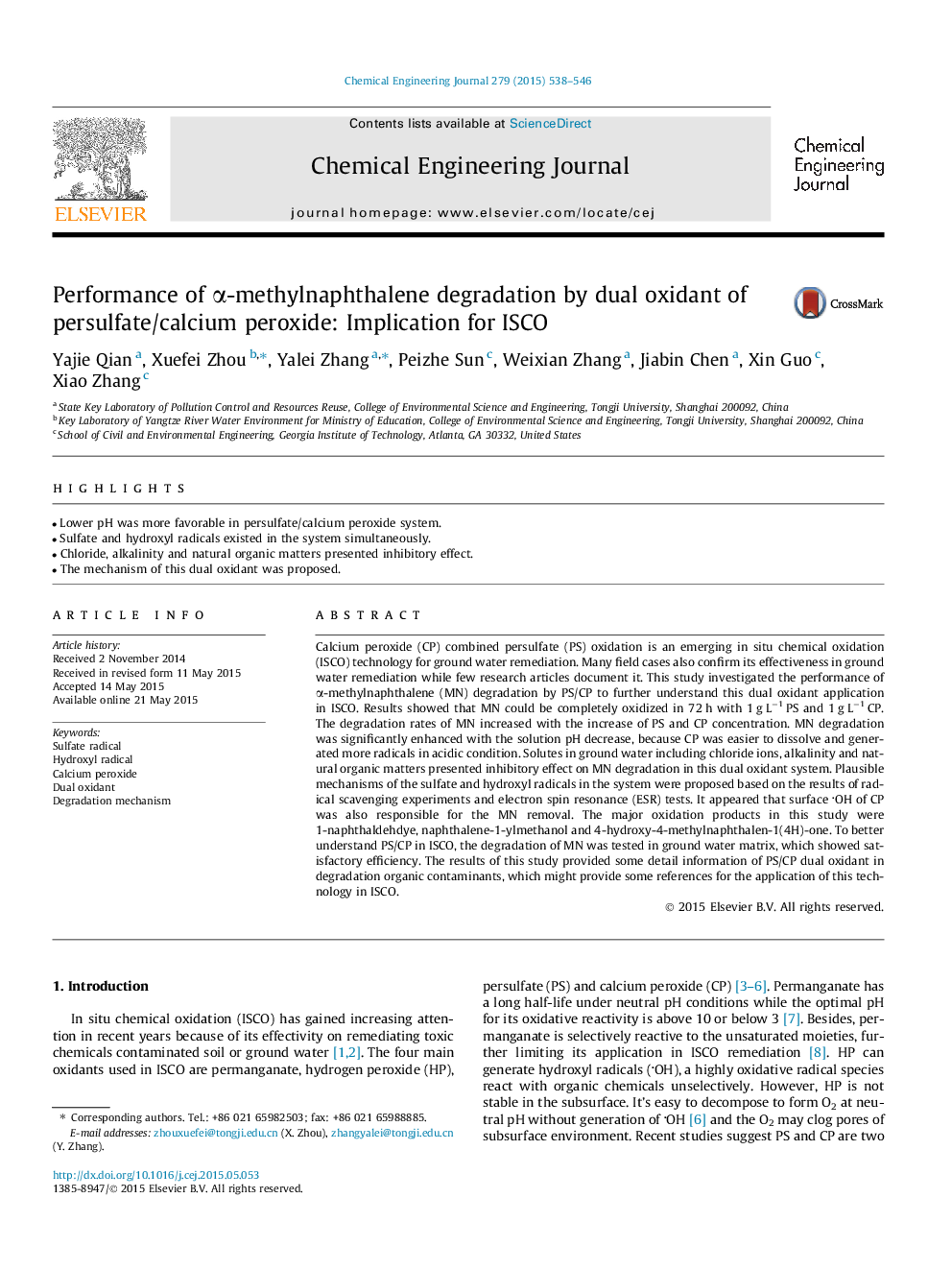| Article ID | Journal | Published Year | Pages | File Type |
|---|---|---|---|---|
| 146098 | Chemical Engineering Journal | 2015 | 9 Pages |
•Lower pH was more favorable in persulfate/calcium peroxide system.•Sulfate and hydroxyl radicals existed in the system simultaneously.•Chloride, alkalinity and natural organic matters presented inhibitory effect.•The mechanism of this dual oxidant was proposed.
Calcium peroxide (CP) combined persulfate (PS) oxidation is an emerging in situ chemical oxidation (ISCO) technology for ground water remediation. Many field cases also confirm its effectiveness in ground water remediation while few research articles document it. This study investigated the performance of α-methylnaphthalene (MN) degradation by PS/CP to further understand this dual oxidant application in ISCO. Results showed that MN could be completely oxidized in 72 h with 1 g L−1 PS and 1 g L−1 CP. The degradation rates of MN increased with the increase of PS and CP concentration. MN degradation was significantly enhanced with the solution pH decrease, because CP was easier to dissolve and generated more radicals in acidic condition. Solutes in ground water including chloride ions, alkalinity and natural organic matters presented inhibitory effect on MN degradation in this dual oxidant system. Plausible mechanisms of the sulfate and hydroxyl radicals in the system were proposed based on the results of radical scavenging experiments and electron spin resonance (ESR) tests. It appeared that surface OH of CP was also responsible for the MN removal. The major oxidation products in this study were 1-naphthaldehdye, naphthalene-1-ylmethanol and 4-hydroxy-4-methylnaphthalen-1(4H)-one. To better understand PS/CP in ISCO, the degradation of MN was tested in ground water matrix, which showed satisfactory efficiency. The results of this study provided some detail information of PS/CP dual oxidant in degradation organic contaminants, which might provide some references for the application of this technology in ISCO.
